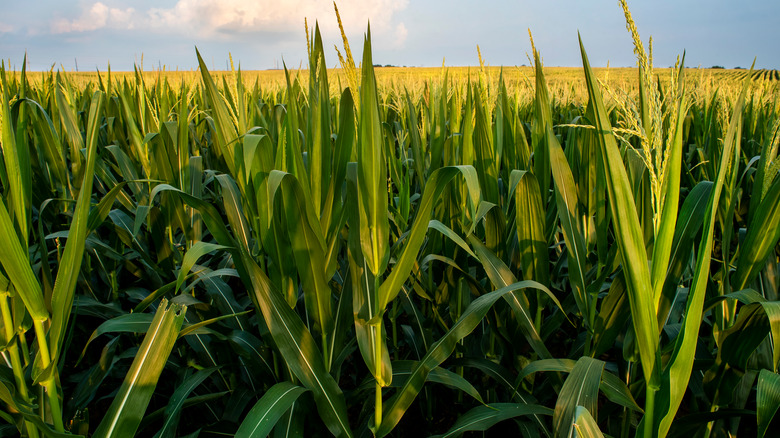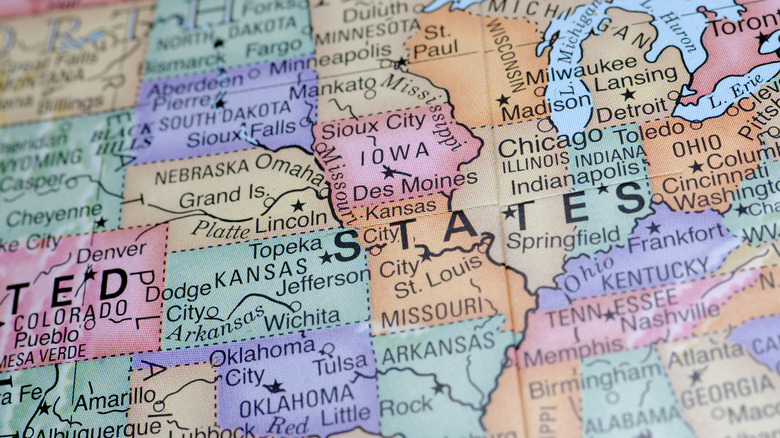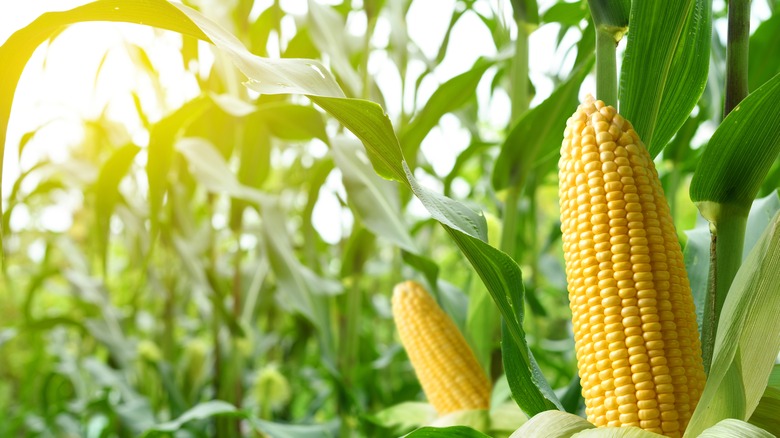What Is The United States' 'Corn Belt'?
In the United States, assigning a nickname to a city, state, or region is a widespread practice. Some of these monikers have become just as ubiquitous as the actual names of their respective regions.
According to Elle Decor, New York City borrowed its nickname, The Big Apple, from a term that was applied to horse race prizes and popularized during the 1920s. Las Vegas is called Sin City, as the desert metropolis has long been associated with all manner of debaucherous goings-on. Reader's Digest tells us that Louisiana is nicknamed The Pelican State, which refers to the state's beloved population of brown pelicans. Michigan got the moniker The Wolverine State for a similar reason, and New Hampshire's geological gifts earned them the unofficial title The Granite State.
Often, entire sections of the United States are also given nicknames. One geographic region is referred to by an alias that draws inspiration from the cornfields that cover it, per Mental Floss.
The massive Midwestern corn belt
According to the U.S. Department of Agriculture, the corn belt refers to an area of the Midwest consisting of a dozen different states. The region grows the vast majority of the United States' corn every year, and as such, the corn belt harvests more than 36% of the planet's total annual corn crop.
A couple of the states that make up the belt have corn-themed monikers. Nebraska is known as The Cornhusker State, and several University of Nebraska sports teams are called the Cornhuskers; Iowa is sometimes referred to as the Corn State, per Reader's Digest. Within the belt, Iowa produces the most corn. In 2021, it produced more than 64 million metric tons (per USDA), a significant portion of the roughly 560 billion pounds of corn that Mental Floss says the entirety of the belt produces yearly. Geography Realm explains that this massive corn crop is grown on fields encompassing an area larger than 69 million football fields. Mental Floss also informs us that the corn belt has been at the center of the American corn industry for over 150 years.
Climate change and the corn belt
A freshly grilled and heavily buttered skewer of corn on the cob is a beloved summer snack. However, you may have trouble finding a skewered ear of corn at your local county fair in the coming years. Climate change seems to be already causing issues in the corn belt.
The corn belt has a peculiar ecosystem. Smithsonian Magazine, citing research from NASA, explains that the region has more photosynthesis at the height of the corn production season than any other plant hub on Earth. Science tells us the region has experienced a decrease in temperatures and an increase in precipitation in recent years, possibly due to the effects this plant production has on weather patterns.
However, even the robust ecosystem of the corn belt is not immune to the effects of climate change. Harvard University climate scientist Peter Huybers believes that the excess moisture and cooler weather will ultimately succumb to the greenhouse effect (via Science). According to Columbia Climate School, climate change has caused an equalization of regional wind temperatures such that storms will no longer provide an adequate water supply to the region's corn. Dry crops lead to a poor harvest.
Nearly every food you eat, from fries to soda, features corn in one form or another (via Insider). If climate change continues to influence weather patterns in the corn belt, your Cornflakes may soon be harder to come by.


